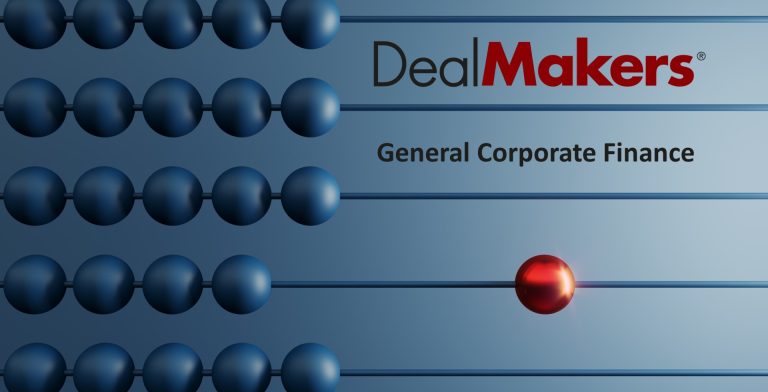An auditor change at Blue Label Telecoms
The importance of Cell C is clear
Normally, news of an auditor rotation is about as exciting as the after-lunch session of parliament. When it comes to Blue Label Telecoms though, I thought this one was worth mentioning.
SNG Grant Thornton has been appointed as auditor, a name that you don’t see too often in JSE companies. PWC has rotated off this audit.
So, why is this interesting? Well, SNG Grant Thornton happens to be the auditor of Cell C, so the idea here is to save costs on the group audit, as Cell C is such a major component of the audit. Having the same auditor throughout the structure helps with audit fees.
Cell C is a big part of the Blue Label investment thesis, with the share price down 27.5% over the past six months. It has climbed 7% in the past 30 days though, so momentum is encouraging.
Cashbuild wants to mop up retail shareholders
The costs of maintaining a wide shareholder register are significant
An odd-lot offer isn’t an attempt to get rid of the strangest shareholders on the register. Instead, it’s a tool that lets a company mop up the register to decrease the costs of being listed.
An odd-lot offer impacts anyone holding fewer than 100 shares. Cashbuild’s share price of R190 makes this a significant holding of R19,000 – a number that will catch many retail shareholders in its net.
There are 2,477 shareholders that fall into this category, representing 57.59% of the total ordinary shareholders in the company but representing only 0.16% of total issued shares.
The price is a 5% premium to the 30-day volume weighted average price based on close of business on 17 March. This will make it tricky for those looking for an arbitrage (building up a position of fewer than 100 shares and getting out for a profit).
Critically, if you do not specifically make an election with your shares, you will be deemed to sell them under the odd-lot offer!
The approval of the odd-lot offer and a specific repurchase of R194 million from Patrick Goldrick will be the subject of a general meeting on 6 March.
Mining Indaba presentations
A couple of junior miners have made their presentations available
Having sat in ridiculous traffic in the Cape Town CBD earlier today, I can confirm that the Mining Indaba has attracted a lot of people. Even CNN’s Richard Quest is in town, doing what most tourists do: landing in Johannesburg and heading to Cape Town as quickly as humanly possible.
For investors in this sector, newsflow from the Indaba is critical. Some of the mining companies on the JSE will release their presentations this week, so budding geologists and mining investors will have lots of new material to dig into.
To get you going, Orion Minerals made its presentation available here and Southern Palladium has released its presentation at this link.
Sibanye has received environmental permits for Keliber lithium
The project in Finland is moving forward solidly
Sibanye-Stillwater’s environmental permit for the Keliber lithium project’s Rapasaari mine and Päiväneva concentrator has been received. I’m glad I don’t have to pronounce these names, particularly the second one that sounds like a type of pastry.
The permit came with 144 conditions and the company has made a submission to court for clarification or changes to six of those conditions.
Along with the approval for the Keliber lithium refinery in Kokkola, this permit means that Sibanye is still on schedule for the project. The construction phase for the refinery is expected to start within weeks.
It’s been a tough 12 months for the company, having dealt with major operational challenges in its gold and PGM businesses:

Santova’s buyback is progressing well
Nearly R32 million has been deployed into share repurchases
In the US, share repurchases are practically a national sport. Companies use them as an alternative to cash dividends, thereby crowing about “years of uninterrupted cash dividend growth” – yes, because share repurchases are simply increased or decreased in response to performance!
In South Africa, our listed companies are better than that. They generally use share repurchase programmes in the right manner: deploying capital into buybacks when they believe that their shares are undervalued.
Between 1 November 2022 and 2 February 2023, Santova invested R31.9 million in its own shares at an average price of R7.77 per share. The current share price is R8.10, so those shareholders who stuck around will be happy with that.
This repurchase represents 3% of the company’s issued share capital. The remaining authority for buybacks is for 16.3% of total issued shares.
Particularly in smaller companies on the JSE, seeing management teams with capital allocation discipline is encouraging.
Little Bites:
- Director dealings:
- A director of Stefanutti Stocks has bought shares worth R38.75k
- A director of EOH has bought nil paid letters worth R11.6k (these give the right to participate in the rights offer and those who don’t want to invest further capital can sell their nil paid letters)
- The institutional investor activity in Spar continues, with Old Mutual buying more shares in the retailer.
- Those closely following York Timber will be pleased to know that the new CFO (Schalk Barnard) will start in his new role on 1 May 2023.
- The CEO of African Dawn Capital (David Danker) has resigned, with the current executive chairman James Slabbert serving as interim CEO.
- If you are a shareholder in Sable Exploration and Mining, be aware that the circular related to the mandatory offer by PBNJ Trading and Consulting has been released.





















